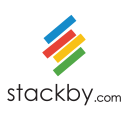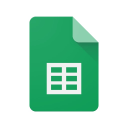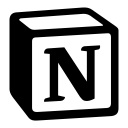Airtable vs Stackby: Which is the best tool for your workflow?
- 01Airtable vs Stackby: overview
- 02What's the difference between Airtable and Stackby?
- 03Airtable pros and cons
- 04Stackby pros and cons
- 05Airtable compared to Stackby
- 06Stackby compared to Airtable
- 07Features comparison
- 08Airtable vs Stackby: Which is the best for your business?
- 09Promotions on Collaboration software
- 10Alternatives to Airtable & Stackby
Access up to $1,000 savings on Airtable & $500 on Stackby
Stackby
$500 in credits for 1 year
Access up to $1,000 savings on Airtable & $500 on Stackby
Stackby
$500 in credits for 1 year
Project management and collaboration tools are pivotal in optimizing the workflow of modern businesses. As these tools evolve, they become increasingly tailored to specific business needs, offering a range of functionalities for task management, automation, and integration. Given the variety and depth of their features, choosing the right platform can significantly impact your team's productivity and efficiency. That’s why it’s crucial to understand the market and the specific capabilities of each tool.
In this article, we compare two prominent platforms—Airtable vs Stackby. By exploring their main features and product offerings, you’ll gain a clearer understanding of what sets each apart and which one may better suit your business requirements. Both platforms offer customizable spreadsheets with database capabilities and rich integration ecosystems, but they differ in user interface, ease of use, unique features, and pricing structures. Let’s delve into these aspects to help you make an informed decision.
Airtable vs Stackby: overview
Airtable and Stackby are significant players in the field of cloud-based project management software and database solutions, each offering unique features and capabilities. Choosing between these two can be challenging, given their comprehensive tools and adaptive platforms.
To aid in your decision-making, we have compiled a detailed comparison table that highlights the main characteristics of Airtable and Stackby. This table employs a star-based rating system along with in-depth analyses, providing essential information to help you make an informed choice for your project management needs.
Whether your focus is on customizable databases, automation, integration options, or real-time collaboration, our comparison will guide you through the Airtable vs Stackby discussion and assist you in determining which platform aligns best with your operational goals and business strategies.
What's the difference between Airtable and Stackby?
Airtable and Stackby are both prominent tools in the realm of cloud-based project management and database management, offering powerful features for businesses of varying sizes. Despite their similarities in functionality, there are distinct differences in their approaches and specializations that make each platform uniquely suited to different types of users.
Airtable is widely recognized for its user-friendly interface and robust integration capabilities. It combines the simplicity of a spreadsheet with the complexity of a database, allowing users to create custom solutions that can include everything from project tracking to CRM systems. Airtable shines with its rich set of templates and blocks, which are pre-built apps like Gantt charts and pivot tables that users can insert directly into their workspace. Its extensive integration ecosystem includes popular apps such as Slack, Salesforce, and Dropbox, enhancing its flexibility and application in diverse environments.
Stackby, on the other hand, closely mirrors Airtable in structure but sets itself apart with a slightly different focus. Stackby emphasizes real-time API connections, allowing users to pull data automatically from third-party sources and keep their databases up-to-date without manual entry. This feature is particularly beneficial for users who need to integrate live data from external APIs directly into their databases, making Stackby ideal for marketing, SEO monitoring, and product management tasks where real-time data is crucial.
In terms of pricing, both platforms offer tiered plans suited to different user needs, from free versions for basic use to enterprise-level offerings with advanced features. Stackby’s pricing tends to be more accessible for smaller teams or startups, while Airtable's pricing structure is designed to scale up with businesses as they grow, providing more extensive collaboration tools and automation capabilities at higher tiers.
Overall, while both Airtable and Stackby provide excellent capabilities for database management and project organization, your choice between them might hinge on specific needs like ease of use and seamless integrations offered by Airtable, or the real-time data synchronization features that are central to Stackby.
Airtable pros and cons
What are the advantages of Airtable?
- User-friendly interface: Airtable offers a clean, intuitive interface that combines the familiarity of a spreadsheet with the power of a database, making it accessible to users with varying levels of technical expertise.
- High customizability: With a flexible structure that includes various field types and views like Kanban, calendar, grid, and gallery, Airtable allows users to tailor the platform extensively to fit specific project needs.
- Robust integration capabilities: Airtable integrates seamlessly with numerous other applications such as Slack, Salesforce, and Zapier, facilitating efficient workflows and data synchronization across different tools.
- Powerful automation: Users can set up custom automations within Airtable to handle repetitive tasks, send notifications, or update other tools, enhancing productivity without needing external automation platforms.
- Rich templates and blocks: Airtable offers a wide array of pre-built templates and blocks (now part of Airtable Apps), which can be used to quickly set up complex functions like Gantt charts, pivot tables, or custom dashboards.
What are the disadvantages of Airtable?
- Pricing: While Airtable offers a free tier, its more advanced features, higher data limits, and enhanced automation are gated behind premium plans, which can be expensive for small businesses or startups.
- Steep learning curve for advanced features: While basic functionality is user-friendly, leveraging more complex features and customizations can require a significant time investment to learn.
- Limited data handling for large sets: Users with very large datasets might find Airtable’s performance lagging, as it is not optimized for handling data at the scale of a traditional relational database system.
- Dependence on internet connection: Being cloud-based, Airtable requires a stable internet connection for access, which can be a limitation in areas with poor connectivity or during outages.
- Privacy and security concerns: For organizations with stringent data security and privacy requirements, relying on a third-party cloud service like Airtable might pose potential risks and compliance issues.
Compare Airtable to other tools
Stackby pros and cons
What are the advantages of Stackby?
- Real-time API integration: Stackby sets itself apart with the ability to connect directly to external APIs, allowing users to automatically update their tables with real-time data from other services, which is ideal for tasks requiring constant data refreshes.
- Ease of use: Like Airtable, Stackby provides a spreadsheet-style interface that is easy to navigate, making it approachable for users without technical expertise. It also allows for quick setup and on-the-fly adjustments to databases.
- Customizable templates: Stackby offers a variety of ready-to-use templates for different industries and functions, which can help users get started quickly and model their databases without starting from scratch.
- Collaboration features: Stackby supports real-time collaboration, enabling teams to work together seamlessly on projects. Team members can easily share databases, track changes, and communicate within the platform.
- Affordable pricing: Stackby offers competitive pricing, including a free tier, which makes it accessible for small businesses and startups that need a powerful database solution without a significant investment.
What are the disadvantages of Stackby?
- Limited integrations compared to competitors: While Stackby’s API connectivity is robust, it generally has fewer native integrations with third-party applications compared to platforms like Airtable, potentially limiting its plug-and-play capabilities.
- Performance issues with larger datasets: Users might experience slowdowns or performance issues when working with very large datasets, as Stackby may not handle large volumes of data as efficiently as more traditional database systems.
- Learning curve for API features: Although basic functionality is user-friendly, fully leveraging the API integration features requires a bit of technical knowledge, which might be a barrier for users unfamiliar with APIs.
- Fewer advanced features: Stackby does not offer as many advanced database and automation features as some of its competitors, which might limit its usefulness for more complex project needs.
- Customer support variability: Some users report variability in the responsiveness and helpfulness of customer support, which could impact user experience, particularly for troubleshooting more complex issues.
Airtable compared to Stackby
Airtable and Stackby are both versatile project management tools that cater to diverse business needs through customizable database functionalities. Airtable excels with its user-friendly interface, extensive integration options, and robust template library, making it ideal for those who seek seamless third-party software interactions and easy adoption.
On the other hand, Stackby differentiates itself with unique real-time API integration capabilities, allowing for the automatic updating of data, which is particularly valuable for tasks that require up-to-the-minute accuracy. While Airtable might be preferable for users needing extensive automation and integration, Stackby is more suited for those who prioritize live data connectivity.
Is Airtable better than Stackby?
Determining whether Airtable is better than Stackby depends on specific organizational needs and priorities. Airtable is generally more suited for teams that require a comprehensive suite of features including advanced automation, broad integration with other tools, and a vast selection of customizable templates. Its user-friendly design simplifies complex projects and enhances team collaboration.
In contrast, Stackby is tailored for scenarios where real-time data synchronization is paramount. If your primary requirement is the capability to continuously pull and update data from external APIs directly into your workflow, Stackby might serve your needs more effectively than Airtable.
What is Airtable best used for?
Airtable is best used for managing projects and organizing data in a versatile, visually engaging way. It combines the simplicity of a spreadsheet with the power of a database, making it ideal for creating customizable workflows and databases tailored to specific needs. Its extensive template library and robust integrations make it especially useful for teams in marketing, content management, event planning, and CRM.
Airtable's capabilities in automating repetitive tasks and managing diverse datasets also make it a favorite among businesses that require collaborative tools to enhance productivity and streamline communication across multiple departments or project teams.
Can Airtable replace Stackby?
Airtable can replace Stackby for many users due to its broader range of features, superior user interface, and extensive integration capabilities. It offers a more polished experience with added functionalities like a richer template library and advanced automation tools that can handle complex workflows efficiently.
However, for users who rely heavily on real-time data updates from external APIs, Stackby’s specific functionality in this area might be missed. Essentially, while Airtable can serve as a robust alternative for most database and project management needs, the decision largely depends on specific requirements like API integration and the scale of data handling.
Is Airtable cheaper than Stackby?
Comparing the costs of Airtable and Stackby depends largely on the specific needs of a business. Airtable offers a free tier and several paid plans that increase in price with additional features, larger attachment space, and more automation. Stackby, while similar, typically offers more budget-friendly options, especially appealing to smaller teams or startups.
For businesses requiring extensive integration and advanced features, Airtable’s pricing plans might prove costly. However, Stackby could be the more economical choice for those who need basic functionalities with an emphasis on API integrations, without the breadth of features that Airtable provides. Deciding which is cheaper depends on the particular features and scale of use.
Is there a better Collaboration software than Airtable?
Choosing the right project management and database software requires a careful evaluation of your organization's specific needs and goals.
While Airtable is a versatile and powerful tool, there are other software solutions to consider. Notion, Monday.com, Smartsheet, and Coda all offer competitive alternatives to Airtable's platform. Each software has its own strengths and unique features, such as Notion's extensive note-taking and documentation capabilities, Monday.com's highly visual project tracking tools, Smartsheet's deep functionality for enterprise-grade project management, and Coda's blend of document creation with database management. Your choice should be guided by your organization's particular requirements, the existing technology landscape, and your strategic objectives for project and data management.
$1,000 in credits for 1 year on Airtable
Get $1,000 in credits for 1 year on Airtable and up to $1,000 savings with Secret.
Stackby compared to Airtable
Stackby and Airtable are both project management tools that enable users to customize databases and streamline workflows, but they cater to different user needs. Stackby focuses on real-time API data integration, allowing users to automatically pull and update data from external sources, which is invaluable for marketing and live data tracking.
Airtable, on the other hand, offers a more intuitive user interface, extensive third-party integrations, and a richer set of pre-built templates, making it highly adaptable for a wide range of business applications. While Stackby is ideal for API-centric tasks, Airtable’s broad functionalities and ease of use make it suitable for diverse project management needs.
Is Stackby better than Airtable?
Deciding if Stackby is better than Airtable hinges on the unique requirements of your business operations. For enterprises that heavily depend on the integration of real-time data from external APIs for tasks like marketing analytics and live performance tracking, Stackby provides a distinct advantage. Its specialized focus on API connectivity ensures that data-driven teams can maintain up-to-the-minute accuracy in their databases.
However, for organizations looking for an all-encompassing tool that supports a wide array of business functions with ease of use, advanced automations, and extensive integrations, Airtable might prove to be the superior choice. Essentially, Stackby is preferable when API integration is a critical component of your workflow, standing out in scenarios where timely data updates are crucial.
What is Stackby best used for?
Stackby is particularly effective for projects that require real-time data updates and integration with external APIs, making it a standout choice for teams in marketing, SEO, and product management. Its capability to automatically sync up-to-date information directly into the user's database from various online services is a key feature. This facilitates dynamic data management without manual input, ensuring accuracy and timeliness.
Stackby also offers a straightforward spreadsheet-like interface which simplifies data organization and collaboration, making it accessible for users without extensive technical skills. This combination of features makes Stackby ideal for businesses that prioritize up-to-the-minute data in their operations.
Can Stackby replace Airtable?
Stackby can replace Airtable for users whose primary need is real-time data integration with external APIs, as it excels in seamlessly updating and managing data from various sources. Its spreadsheet-style interface and straightforward functionality make it a viable alternative for general project and data management tasks.
However, for users who require advanced features like rich integration with multiple applications, extensive automation, and a wide array of pre-built templates, Airtable might still be the preferable choice.
Is Stackby cheaper than Airtable?
Stackby often emerges as the more budget-friendly option compared to Airtable, particularly appealing to smaller businesses or startups. It offers a free plan and various paid tiers that are generally more accessible in price than Airtable's corresponding plans.
While Airtable provides a broader range of advanced features and integrations that may justify its higher cost for larger companies or those requiring complex workflows, Stackby's pricing structure is tailored to users who need essential database functionalities with an emphasis on real-time API integration. For organizations assessing costs versus benefits, Stackby can be a cost-effective alternative if the key features align with their operational needs.
Is there a better Collaboration software than Stackby?
Choosing the right project management and database software depends on your organization's specific needs and operational preferences.
While Stackby is a robust and versatile tool, particularly strong in real-time API integration, there are alternative platforms like Airtable, Asana, ClickUp, and Trello that offer competitive alternatives to Stackby’s capabilities. Each of these platforms has its own strengths and areas of specialization. For example, Airtable provides extensive integrations and a user-friendly interface, Asana excels in task management and team collaboration, ClickUp offers comprehensive workflow customization and visualization, and Trello is renowned for its simple, card-based project management system. Your choice should be guided by your organization's unique requirements, existing processes, and long-term objectives.
$500 in credits for 1 year on Stackby
Get $500 in credits for 1 year on Stackby and up to $500 savings with Secret.
Features comparison
Airtable Leads in Integration Capabilities Over Stackby
Integration possibilities between different software tools are vital for modern businesses as they enhance efficiency and reduce manual workload. When comparing the integration capabilities of Airtable with Stackby, Airtable clearly holds the stronger position. Airtable supports a wide array of integrations with over a thousand apps through Zapier, direct plugins with popular communication software, CRM systems, and productivity tools like Slack, Salesforce, and Google Workspace, and custom script options for tailored solutions. For example, users can automate data entry from a Gmail account directly into Airtable, streamlining email management and customer relationship workflows.
In contrast, Stackby focuses mainly on API connectivity for pulling data from external sources. While powerful, Stackby's integrations are somewhat less diverse than Airtable's, making Airtable the more adaptable choice for businesses looking to seamlessly connect and automate across a broader spectrum of applications.
Airtable Provides More Comprehensive Automation Than Stackby
While both Airtable and Stackby equip users with automation features, Airtable offers a broader and more versatile approach in automating workflows to manage recurring tasks and streamline business processes. Airtable's automation capabilities extend beyond basic task management, allowing for complex triggers, actions, and integrations that can automate entire workflows. For instance, users can set up automations to send notifications, update records, or trigger emails based on specific changes within a database, effectively reducing manual intervention across operations.
On the other hand, Stackby's automation primarily revolves around its strength in API-based data updating. While this is highly effective for real-time data synchronization, it might not cover the breadth of automation needs, such as workflow sequencing or conditional logic operations, making Airtable a more adaptable tool for businesses looking to fully automate diverse aspects of their operations.
Airtable and Stackby Equally Excel in Custom Database Solutions
Both Airtable and Stackby empower users to tailor their databases to meet specific operational needs, though they each bring unique strengths to the table. Airtable provides a versatile array of field types, including text, numbers, checkboxes, and attachments, which facilitate the capture and organization of diverse data. Moreover, Airtable's interface allows users to easily manipulate these fields into various views like Kanban, grid, or calendar, enhancing usability across different project types.
Stackby, however, expands on this by offering more than 20 specific field types and a rich assortment of ready-to-use templates that cater to specific industries or tasks, such as marketing campaigns or project tracking. This extensive variety in Stackby is particularly useful for users who require detailed customization right out of the box, positioning both platforms as equally capable in facilitating a custom database structure but with slight differences in user experience and specialization.
Stackby Surpasses Airtable in Data Import Efficiency
Stackby offers robust data import tools that outshine Airtable when it comes to consolidating data from various external sources such as Google Sheets, Excel, and CSV files. This feature allows users to seamlessly import and centralize data into one location for easier analysis and management. Unlike Airtable, where the process may sometimes involve more steps or require additional copying and pasting, Stackby's streamlined import capabilities significantly reduce manual effort and the potential for errors.
For example, Stackby users can directly upload multiple data types and large datasets in bulk, simplifying the transition and integration of existing data systems into Stackby’s platform. This efficiency is especially beneficial for businesses that frequently handle data migration or synchronization across different software tools, thereby saving substantial time and enhancing productivity.
Stackby Excels in Real-Time Task Management Over Airtable
In terms of task management, Stackby offers a distinct advantage over Airtable through its dedicated features designed for organizing, prioritizing, and tracking the progress of tasks and projects in real-time. Stackby allows users to seamlessly set deadlines, assign tasks to team members, and monitor ongoing developments with comprehensive oversight. This capability ensures that every project detail is actively managed and updated, fostering a dynamic work environment.
In contrast, Airtable's approach to task management typically involves more reliance on setting up custom views, notifications, and reminders to keep tasks on track. While effective, this method may not provide the same level of immediacy and interactive tracking that Stackby's dedicated task management features offer, making Stackby particularly advantageous for teams that require real-time updates and hands-on project oversight.
Airtable Dominates in Data Visualization Compared to Stackby
Airtable clearly outshines Stackby with its superior data visualization capabilities, offering a wide array of options for users to transform their data into meaningful insights. It allows users to create pie charts, bar graphs, line charts, and more, making it easier to identify patterns, trends, and outliers effectively. These robust visualization tools are pivotal for data-driven decision-making and reporting, allowing teams to quickly grasp complex information.
While Stackby does offer a useful calendar view that helps in scheduling and visualizing tasks over time, it lacks the diverse and comprehensive charting and graphing features that Airtable provides. This makes Airtable a more versatile choice for organizations that rely heavily on visual data analysis to guide business strategies and operational improvements.
Airtable Offers Superior Ease-of-Use Compared to Stackby
Airtable and Stackby are both robust SaaS platforms designed to simplify project management and collaboration. However, when it comes to ease-of-use, Airtable distinctly outshines Stackby. Both platforms boast intuitive interfaces, but Airtable's user experience is notably more streamlined, featuring a less steep learning curve that appeals to a broad range of users. Airtable's well-designed UI presents complex features in a straightforward, easy-to-understand manner, allowing users to navigate its environment with greater ease.
For instance, its drag-and-drop functionality and visually oriented design elements help simplify task management and database customization. In contrast, Stackby, while offering powerful API integration features, can initially appear more daunting due to its slightly more complex setup. This distinction makes Airtable particularly valuable for teams seeking quick adoption and minimal training time, thereby enhancing productivity from the outset.
Subscribe to our newsletters.
No FOMO here. Stay up-to-date on all the latest deals and news with our monthly newsletter straight to your inbox like 127,000+ entrepreneurs (+ Get 10% off on on our Premium Membership!)
Airtable vs Stackby: Which is the best for your business?
Airtable is the best tool for you if:
- You value a visually appealing interface that simplifies complex data management, offering customizable views like Kanban, grid, gallery, and calendar to suit various workflow preferences.
- Your team needs powerful integration capabilities, as Airtable connects seamlessly with over 1000 other applications including Slack, Salesforce, and Google Workspace, enhancing your productivity and workflow automation.
- You require a versatile platform that supports a wide range of uses from project management to CRM, with extensive templates and blocks to jumpstart your setup process.
- Advanced automation is crucial for your operations, as Airtable allows you to automate repetitive tasks and streamline communications within your team with minimal coding required.
- Your organization prioritizes collaboration and wants to maintain control over workflows with features like real-time updates, permission settings, and comment functions on every item.
Stackby is the best tool for you if:
- You need real-time API integration, allowing you to automatically pull and update data directly from external sources, making it ideal for marketing and live data tracking.
- Cost-efficiency is a priority, as Stackby offers a competitive pricing structure with a free plan and affordable premium options, suitable for startups and small businesses.
- Customization is key for your data handling, with over 20 unique field types and a range of templates specifically tailored for various industry needs and functions.
- Your projects benefit from real-time collaboration and data management, with features that support direct updates and seamless team coordination within a user-friendly spreadsheet-style interface.
- You're looking for a straightforward tool that merges the functionalities of databases and spreadsheets without the complexity of additional features that your team might not use.
Alternatives to Airtable & Stackby
Promotions on Collaboration software
Start saving on the best SaaS with Secret.
Secret has already helped tens of thousands of startups save millions on the best SaaS like Airtable, Stackby & many more. Join Secret now to buy software the smart way.
















